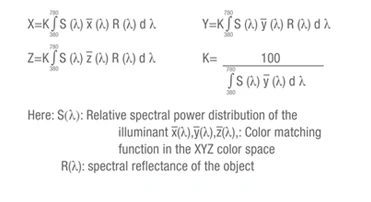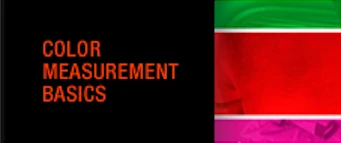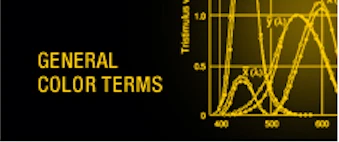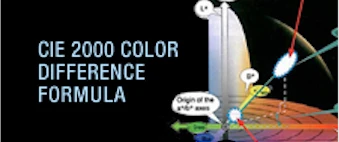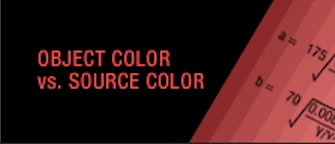Differences between object color and source color
Determining the color of an object was described previously. However, there is a difference when a color is created independently such as by a light bulb. This is called source color. The following is a simple explanation of the differences between object and source color.
Definition Differences
There are three basic factors involved when a human observes the color of an object. They are illumination, the object, and the perception of the observer. However, when a source is observed, there are only two factors: the spectral distribution of the light source and the perception of the observer. The formulas for these concepts are illustrated below.
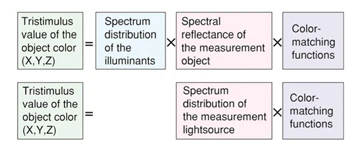
For object color, it is necessary to determine and evaluate the spectral distribution of the illuminants. This is because the color appears differently when the light source varies. The illuminants are not required when the light source color ismeasured because the color of the light source itself must be determined.
Definition Differences
The geometrical conditions of the illumination and optical reception must be considered because the object color may vary under different conditions. Six types of conditions described on page 47 have been defined by the CIE. These conditions do not determine the light source color. However, there are certain angular characteristics in which hue varies depending on the type of the light source and the viewing angle, such as with LCDs. In these cases, the observation angle must be fixed at a set value.
Object Color Definition Formulas
Use the following equation to determine the absolute value of the measurement light quantity when S(λ)is the absolute value of the spectrum radiation density for the XYZ color space. K=683 lm/w
Definition Differences
There are several common methods to describe the light source numerically. They include the xy coordinates, the CIE 1960 UCS color intensity (u, v), the CIE 1976 UCS color intensity (u*,v*), (color temperature)*
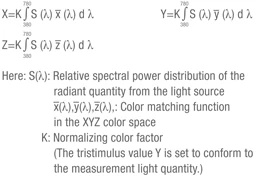
* Refer to here for information about light source color temperature. The L*u*v* color space (CIE LUV) is also used. However, the standard light must be determined when used in the light source color because the L*u*v* color space is based on the standard color as an origin point.
Object Color Definition Formulas
The Hunter Lab color space was developed in 1948 by R.S. Hunter as a uniform color space which could be read directly from a photoelectric colorimeter (tristimulus method). Values in this color space are defined by the following formulas:
